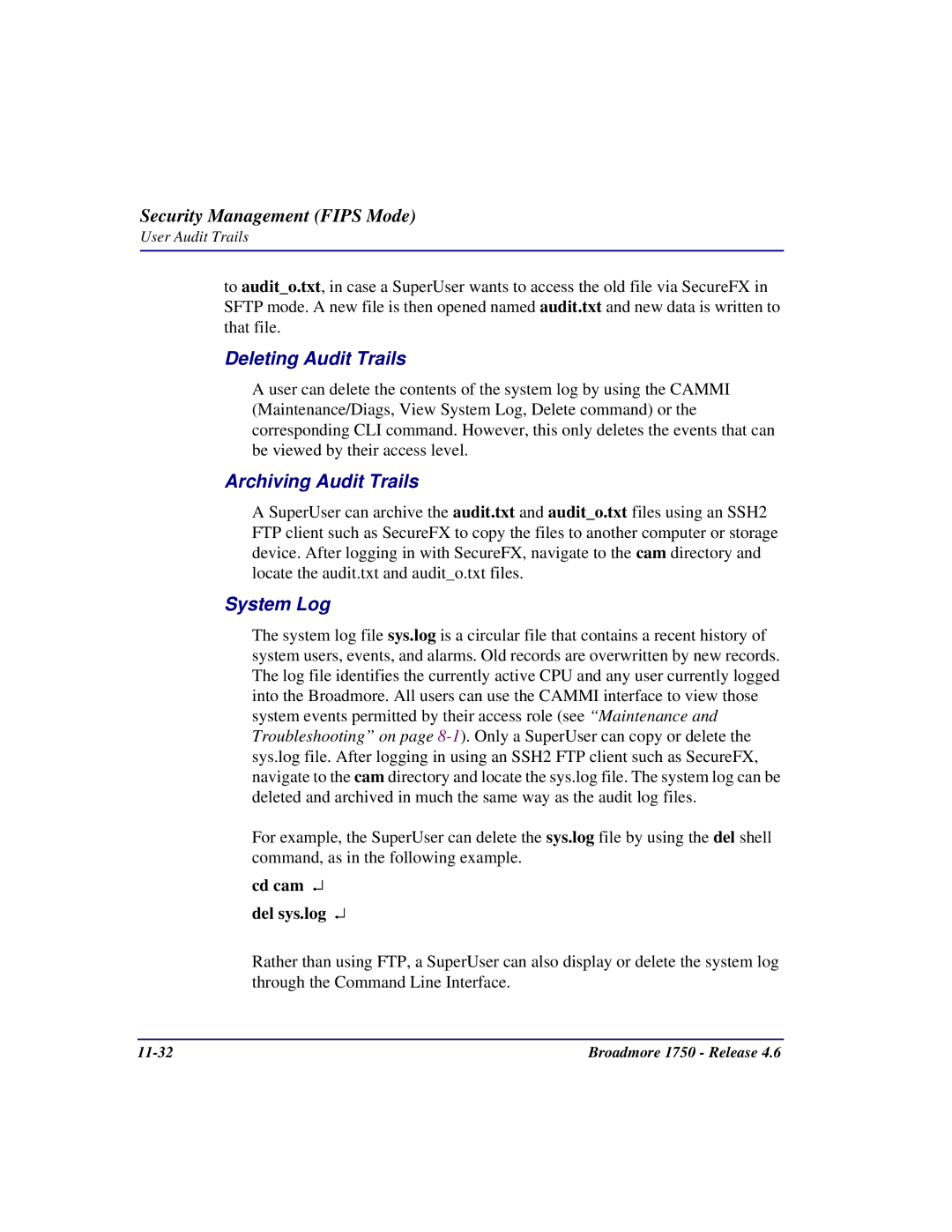
Security Management (FIPS Mode)
User Audit Trails
to audit_o.txt, in case a SuperUser wants to access the old file via SecureFX in SFTP mode. A new file is then opened named audit.txt and new data is written to that file.
Deleting Audit Trails
A user can delete the contents of the system log by using the CAMMI (Maintenance/Diags, View System Log, Delete command) or the corresponding CLI command. However, this only deletes the events that can be viewed by their access level.
Archiving Audit Trails
A SuperUser can archive the audit.txt and audit_o.txt files using an SSH2 FTP client such as SecureFX to copy the files to another computer or storage device. After logging in with SecureFX, navigate to the cam directory and locate the audit.txt and audit_o.txt files.
System Log
The system log file sys.log is a circular file that contains a recent history of system users, events, and alarms. Old records are overwritten by new records. The log file identifies the currently active CPU and any user currently logged into the Broadmore. All users can use the CAMMI interface to view those system events permitted by their access role (see “Maintenance and Troubleshooting” on page
For example, the SuperUser can delete the sys.log file by using the del shell command, as in the following example.
cd cam ↵ del sys.log ↵
Rather than using FTP, a SuperUser can also display or delete the system log through the Command Line Interface.
| Broadmore 1750 - Release 4.6 |
